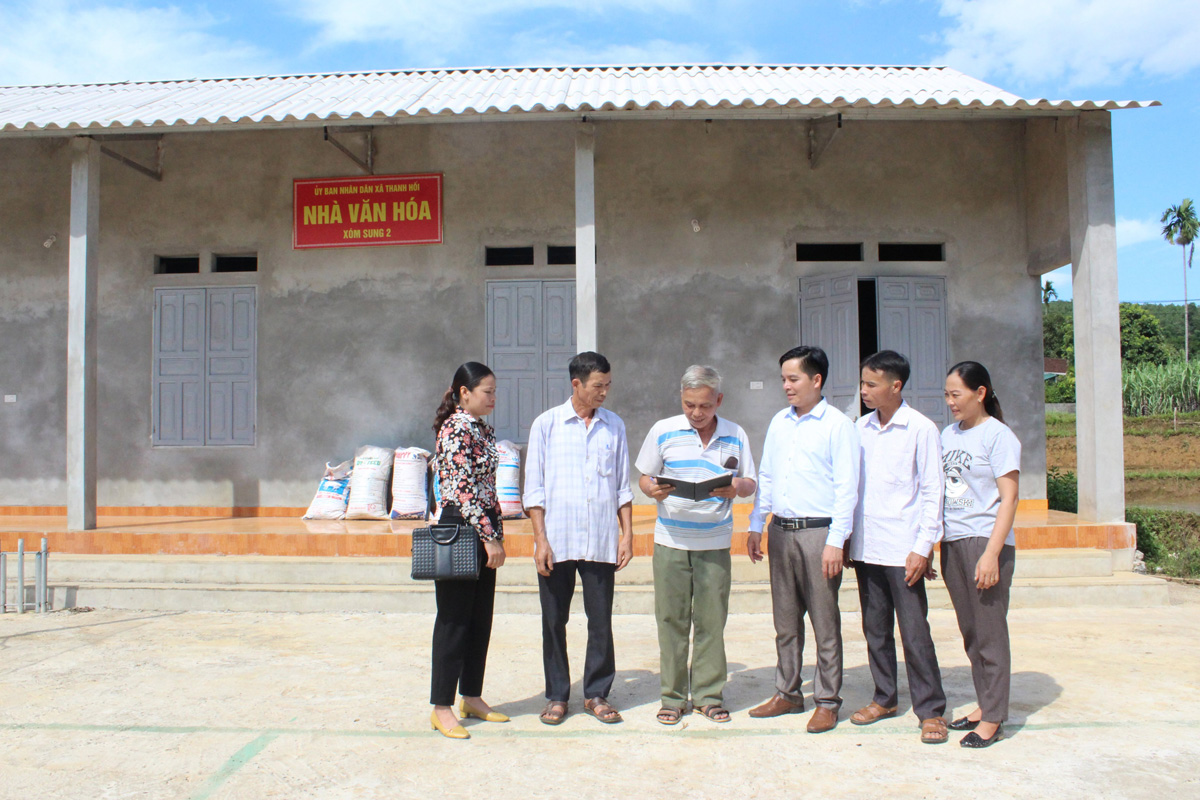


 The officials and
the People of Sung 2 hamlet, Thanh Hoi commune (Tan Lac) are discussing about
how to build a cultural residential area.
The officials and
the People of Sung 2 hamlet, Thanh Hoi commune (Tan Lac) are discussing about
how to build a cultural residential area.
As a result, the emulation movements have achieved positive results such as the movement "Good people, good deeds, advanced examples”, which has built and honored thousands of the typical collectives and individuals in the fields of good study, labor, production and business. They include the households of Mr. Cao Viet Don, Mr. Nhu Dinh Bau Binh (Ngoc My commune), who have donated land for the construction of the new rural area; the household of Mr. Pham Van Thuat, Muong Chieng area (Man Duc town), who are good at business; the household of Mr. Duong Tat Tinh, Tan Huong 1 hamlet (Thanh Hoi commune), who are good at animal husbandry and cultivation ...
Along with the movement of good production and business emulation, the movement of build cultural families has been actively responded by the local people. The registration and the annual review of the title of the cultural family has been conducted openly and democratically, which has the positive meaning in building the movement to achieve results in both quantity and quality. The number of the cultural families in the following year is always higher than that of the previous year. It is estimated that there are 51,622 turns of households being recognized the title of the cultural families, which is the results of implementing the movement in the period of 2016 – 2020
From the nucleus of the cultural families, the movement of building cultural residential areas has also strongly developed. The residential areas have been paying attention to well implementing the democracy regulations at the grassroots, implementing the conventions and regulations of the villages and the hamlets. Therefore, the social evils in the district have been controlled and decreased markedly. In the period of 2016 - 2020, it is estimated that 400 turns of the residential areas reaching the standard of culture in the whole district. In the past 5 years, the movement of "the whole people unite to build a cultural life” has positively affected in building a healthy society, reducing the backward practices and superstitions. The traditional festivals and good beliefs have been preserved.
The movement of building "The cultural agencies and units” has been well implemented by the district’s labor federation in coordination with other branches of the district’s movement steering committee, and they have well carried out the propaganda in agencies, units and enterprises to implement 5 standards "Agency, unit with a good cultural life” issued by the Vietnam General Confederation of Labor. They have also developed plans, guided, checked and evaluated the quality of the Trade Union’s movement of the branches and the affiliated trade unions, making the registration documents for the agencies and units to meet the cultural standards. In the period of 2016-2020, in the whole district there are 590 turns of agencies, units and enterprises being recognized to meet the cultural standards.
In the coming time, the district will continue to promote the achieved results, at the same time they will overcome the shortcomings and the limitations in implementing the movement. They will take the achievements of building culture as a driving force for socio-economic development, improving the people's knowledge, maintaining the security and social order. The process of hunger eradication and poverty reduction will be accelerated, the cultural identities of ethnic groups will be preserved and promoted, which contributes to building Tan Lac homeland to become richer and richer and more and more civilized. The cultural standards and the cultural lifestyle of the people will gradually be formed. It is estimated that about more than 80% of the households achieve the title of the cultural family, about more than 75% of the residential areas get the title of the cultural area, and there are more than 95% of cultural agencies, units and enterprises every year.